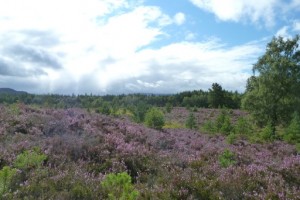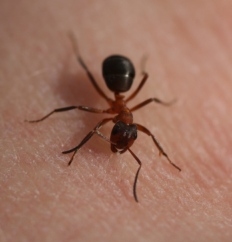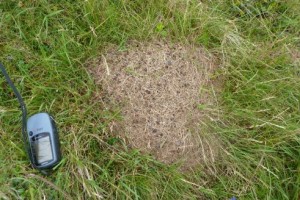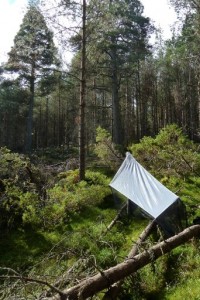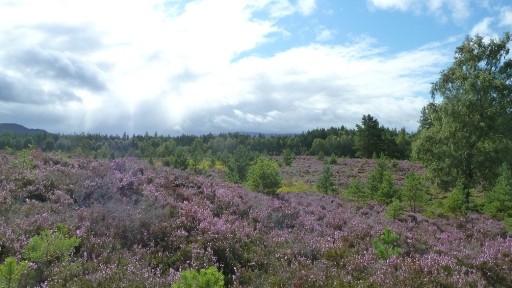
Marching along transects across heathland, fighting off ticks, keds and midges, whilst trying to find strange little grassy mounds that might only be as large as your fist…welcome to my survey for narrow-headed ants on Tulloch Moor at RSPB Abernethy!! It might sound like some folk’s worst nightmare but actually my survey of Tulloch Moor was very enjoyable and turned out to be extremely rewarding in terms of my findings…
Tulloch moor is a beautiful area of heathland adjacent to pineforest and surrounded by bog. Although this heathland would happily turn back into woodland, the RSPB are managing it very carefully as the botanical interest of the heath is quite special. Also, black grouse lek here and it’s popular with a range of invertebrates, fungi and uncommon flora. Eight nests of the narrow-headed ant Formica exsecta, UKBAP and Red Data List species (the same chappy I was looking for at Mar Lodge) had been recorded (much by accident) and it was unknown how many other nests were out there and how common the ant was on the heath. Because of the muir burning and tree felling taking place to look after the heath, ecologist Andy Amphlett at Abernethy thought it would be good to know how many nests of the narrow-headed ant there are and where they are so that suitable habitat is maintained for them on Tulloch Moor.
Andy and I decided I should walk transects across suitable habitat at 10m spacings in order to find as many nests and cover as much ground as possible. 50 hours of searching later (not all in one go I hasten to add!) and I have found another 92 nests on Tulloch Moor! This was a very exciting find as this is a relatively large population, the remaining Abernethy population being between 150 – 200 nests.
Nests ranged greatly in size and shape, and were found in deep heather, edges of bogs and in entirely grassy places. The thatch of the nest contained a broad range of materials, depending on the surrounding vegetation and included heather, grasses, cowberry, and sometimes pine needles and even lichen cut into made to measure pieces.
As well as my survey work of Tulloch Moor, at Abernethy I also found 5 new Formica exsecta nests in areas they were not known to occur on the reserve. It seems the more you look for these ants the more you find them….
Using a Malaise trap kindly lent to me by Buglife I carried out some sampling of a plantation at Abernethy which is being improved for wildlife. A malaise trap looks a bit like a tent and is designed to passively catch insects that fly into it. The RSPB are felling pockets of trees in the plantation to create open sunny habitats which some insects favour. I used my trap to sample from created clearings and from unmanaged, dense plantation to see if there are any differences in insect assemblages between these two habitats. I’ve taken all my specimens back to the lab at the James Hutton Institute to look at over the winter, should keep me busy for a while!
Up next is the last visit to check the insects colonising the pine tree saplings at Ballochbuie and some survey work for slave-making ants (yes you read that correctly!) so watch this space for more ant madness from the pinewood patch!!
Hayley
Caledonian Pinewood Invertebrates

